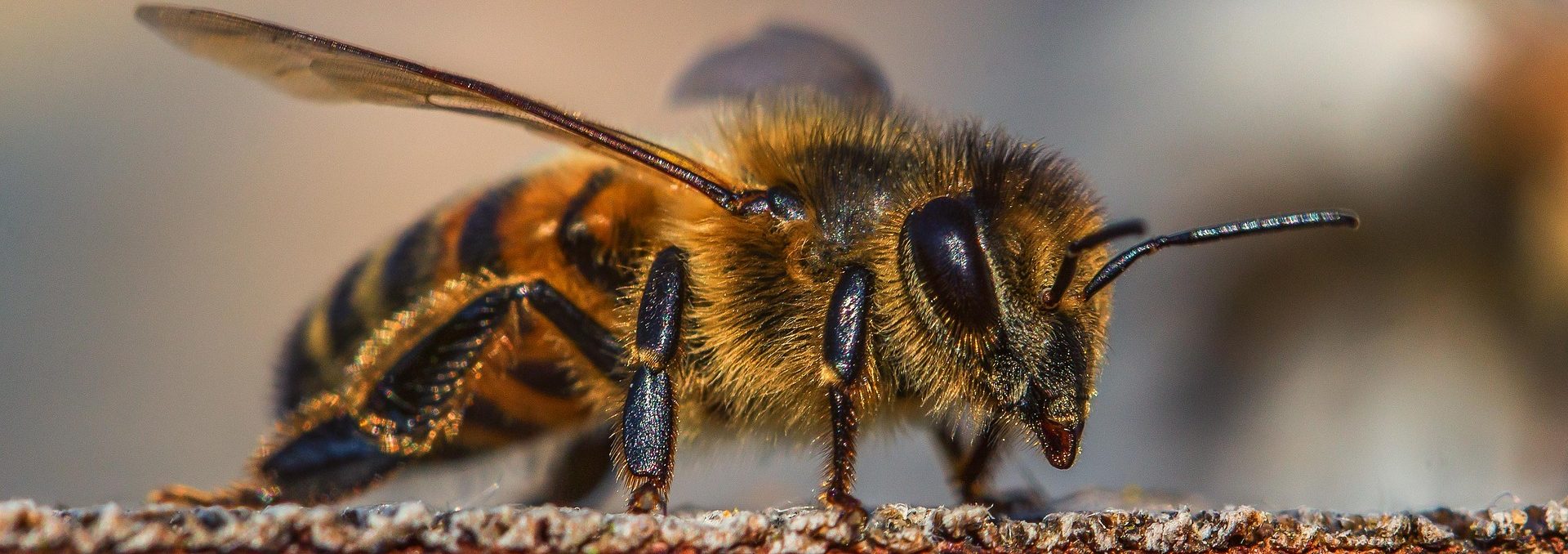- So you’ve got a site, next what equipment do you need? Again, another reason to join a club, as this will give you access to some things that you may not want to purchase initially.
You will need at minimum:
A bee suit and gloves
A smoker
A hive tool
A bee brush
And a hive ready to accept bees
That will let you get your first hive in place. Before long you will need to consider acquiring or borrowing.
Spare frames.
Foundation for those frames.
Additional hive boxes.
The equipment that will allow you to assemble hives and frames.
The equipment that will allow you to extract and process your honey.
The last few items are beyond the scope of this page. I recommend you get a copy of the Bee Book. This is an invaluable source of information.
Using second hand equipment.
Beekeepers should exercise caution when acquiring and/or using second hand equipment. It is important to ensure that it is not contaminated with disease. Probably the most common contamination in used hive equipment is American Foulbrood (AFB) which cannot be killed by any means other that Gamma Irradiation. The Bacteria from AFB can live for many years and, if present, will eventually kill the hive. AFB is highly contagious and can destroy entire apiaries in a short space of time. It can also infect other apiaries close by, as well as feral bee colonies. If you cannot be sure that second hand equipment has been recently irradiated, you should send all the equipment for treatment before use.
Gamma irradiation is a physical means of sterilisation or decontamination where products are exposed to gamma rays. The gamma rays, which are a form of electromagnetic radiation of very short-wave lengths, act as a source of ionising energy that destroys bacteria and pests. The isotope Cobalt-60 is the most common source of gamma rays for irradiation processing.
In Queensland, hive irradiation is available to Beekeepers at Steritech. Steritech’s gamma irradiation process does not involve sufficient energy to make treated products radioactive. The product being treated does not come into contact with the Cobalt-60 and when the process is complete the energy does not remain in the product. Gamma irradiation is known as a ‘Cold Process,’ as the temperature of the processed product does not increase significantly. It is also a chemical free process that is not reliant on humidity, temperature or pressure and can be applied to packaged goods.
Contact Steritech for further information (07) 3385 8400
- So now it’s time to get your bees. There are several different ways to get bees ranging from catching a swarm (not recommended for the novice), to buying bees from another beekeeper. In my view the best way to acquire bees is to purchase a Nucleus hive from a club. And if you have not kept bees before, one or two will be more than enough to get you started and keep you busy.
So what is a Nucleus hive?
Nucs, or Nucleus hives, are small honeybee colonies created from larger colonies. The term refers both to the smaller size box and the colony of honeybees within it. The name is derived from the fact that a nuc hive is centred around a queen – the nucleus of the honeybee colony.
The best time to purchase a Nuc is normally springtime when bees are building up their numbers and beekeepers are splitting their hives. Bee clubs split their hives often with the sole purpose of supplying bees to members.
Your new Nuc will consist of 4 or 5 frames, some brood, some honey and drawn combs or foundation. Normally a young Queen and sufficient bees to cover the frames. Bees are best moved at night. So after dark you would take your Nuc to your chosen site and open the entrance. The bees will probably crawl out but not generally fly in the dark.
Note: if the Nuc is a newly made up one and you transport and open it in daylight make sure you wear your protective gear. If it’s still daylight they will be very keen to get out and can be very defensive.
Hive Position
Place hives in an area with low fire risk and with easy accessibility. Hives should be away from horses, stock-feeding points and people. Keep hives at least 50m away from neighbouring buildings and at least 30m away from roads, footpaths, parks and property entrances. Face hive entrances in a direction that will encourage bees to fly across your property and minimise the risk of interfering with the general public.
If possible try to situate hives where they are not easily seen by passers by. Never in a suburban front yard for example.
Provide a water source within 500m of the apiary. Wet gravel, sand beds, concrete pond edges or floating waterweeds can be used.
Once you have your site the actual position of the hives depends somewhat on your preference and environment. Best to position hives with their entrances away from prevailing winds as they tend to do better than those exposed to wind. In hot climates it is best to paint boxes white inside and out. In extreme heat hives do better in some shade and with water within 100mtrs.
Once the bees have orientated themselves and become settled they will need to be transferred to a full size hive box that you have assembled and prepared before acquiring your bees. The Nuc box should be returned promptly to the beekeeper that supplied it. If you intend to purchase bees from other sources, please ensure you have the means to determine the hive health status. Purchasing diseased bees is a recipe for disaster. You may also unwittingly spread disease to other beekeepers without knowing.
Now sit back and wait for the honey.
